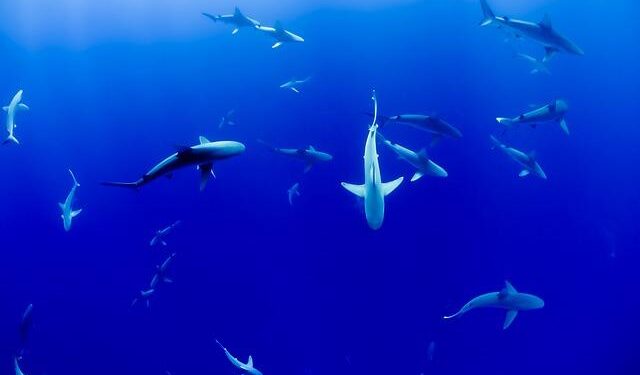Beneath the icy expanse of the Antarctic waters lies a world shrouded in mystery and wonder, an enigmatic realm that has long evaded human exploration. Recent discoveries by scientists have unveiled a breathtaking array of marine life nestled along the sea floor, pushing the boundaries of our understanding of biodiversity in extreme environments. As research efforts delve deeper into these remote waters, the findings have left experts both in awe and curiosity, revealing not only the resilience of life but also the ecological complexities hidden beneath the ice. In this article, we explore the remarkable marine organisms that have captivated scientists and highlight the significance of these discoveries for the future of oceanic research.
Exploring the Antarctic Abyss: Unveiling Hidden Marine Biodiversity
The Antarctic sea floor, long seen as a barren wasteland, has revealed a plethora of life forms that challenge our understanding of marine ecosystems. Recent explorations have uncovered vibrant communities of species existing in this harsh environment, thriving in extreme conditions of temperature, pressure, and darkness. These findings serve as a reminder of the incredible adaptability of life, showcasing organisms that employ unique strategies for survival, such as bioluminescence and extreme tolerance to cold.
Some of the remarkable discoveries include:
- Giant Sea Sponges: These ancient creatures can grow for thousands of years, forming vital habitats for other marine life.
- Colorful Anemones: Their brilliant hues not only add beauty but also indicate a rich biodiversity yet to be fully explored.
- Icefish: Unique for their transparent blood, which contains antifreeze proteins, allowing them to swim freely in icy waters.
Researchers are now faced with the urgent task of documenting and protecting this newfound biodiversity. The potential for discovering new species is immense, with scientists estimating that many remain unclassified. Collaborative efforts across various nations aim to establish marine protected areas that can safeguard these fragile ecosystems from the impacts of climate change and human activity. The table below outlines key characteristics of some of the newly discovered marine life in the Antarctic abyss:
| Species | Habitat Depth (m) | Unique Adaptation |
|---|---|---|
| Giant Sea Sponge | 200-300 | Filter feeder, provides habitat |
| Colorful Anemone | 50-200 | Symbiotic relationships with fish |
| Icefish | 300-800 | Antifreeze proteins in blood |

The Unexpected Discoveries: Species That Challenge Our Understanding
Recent explorations of the Antarctic sea floor have illuminated the marvels of marine life that exist in one of the planet’s most extreme environments. Scientists are consistently surprised by the resilience and adaptability of these species, which thrive in conditions that were once thought to be inhospitable. This newfound knowledge is reshaping our understanding of biodiversity and the potential for life to flourish in seemingly barren landscapes.
Among the astonishing discoveries are various unique organisms that defy traditional classifications and expectations. Some of the standout species include:
- Glacial Ice Worms: These remarkable creatures can survive in freezing temperatures, demonstrating unusual adaptations to their icy habitat.
- Antarctic Sea Spiders: With their long limbs and small bodies, these arachnids hunt for food in the nutrient-rich waters around the continent.
- Giant Amphipods: These oversized crustaceans have been observed in stunning numbers, showcasing the abundance of life beneath the ice.
Furthermore, surprising interactions between different species have been documented, leading researchers to propose new theories about life’s resilience. The table below captures a glimpse of the extraordinary adaptations observed in these fascinating creatures:
| Species | Adaptation |
|---|---|
| Glacial Ice Worm | Active metabolism at temperatures below freezing |
| Antarctic Sea Spider | High surface area body structure for efficient oxygen absorption |
| Giant Amphipod | Enhanced physical strength to navigate in harsh conditions |

Implications for Climate Science: How These Findings Affect Global Ecosystems
The discovery of diverse marine life on the Antarctic sea floor has profound implications for our understanding of climate science and its impact on global ecosystems. This previously uncharted biodiversity underscores the resilience and adaptability of marine organisms in one of the planet’s most extreme environments. As scientists study these species, a better grasp of their ecological roles may reveal insights into how climate change could affect similar ecosystems worldwide.
Additionally, the findings prompt considerations regarding biodiversity loss and its cascading effects. Healthy marine ecosystems contribute to carbon sequestration and the regulation of oceanic conditions, acting as vital buffers against climate change. The presence of new marine species indicates potential shifts in food chains and habitat dynamics, raising questions about how altered conditions could disrupt existing relationships among marine life. Relevant factors include:
- Species Interaction: Changes in predator-prey dynamics.
- Habitat Alteration: Impact on coral and other foundational species.
- Carbon Cycling: Efficiency in sediment and biological carbon capture.
Moreover, understanding the genetic and physiological adaptations of these organisms will likely aid conservation efforts, especially as global temperatures rise. It may allow scientists to develop strategies to protect vulnerable species while promoting ecosystem resilience. Tracking variations in these newly found communities could help refine climate models, providing more accurate forecasts of ecological shifts. The following table summarizes the key adaptations that could be observed within these species and their potential implications:
| Adaptation | Implication |
|---|---|
| Thermal Tolerance | Potential resilience to rising ocean temperatures. |
| Metabolic Flexibility | Ability to thrive in varying nutrient conditions. |
| Reproductive Strategies | Adaptive responses to changing habitats. |

Preserving the Secrets of the Sea: Recommendations for Marine Conservation Efforts
The recent revelations about the astonishing variety of marine life flourishing on the Antarctic sea floor illuminate the urgent need for targeted conservation efforts in our oceans. As scientists unravel the complex ecosystems hidden beneath the ice, it becomes clear that preserving these habitats is not only vital for the health of marine biodiversity but also for the balance of global climate systems. To safeguard these ecosystems, we must prioritize a multi-faceted approach that includes robust protection of marine reserves, sustainable fishing practices, and innovative research initiatives.
Implementing effective marine conservation requires collaboration among governments, scientists, and local communities. Key recommendations include:
- Establishing Marine Protected Areas (MPAs): Designate regions that restrict human activities to foster recovery and resilience of marine habitats.
- Engaging Indigenous Knowledge: Involve Indigenous communities in conservation efforts to leverage their deep understanding of marine ecosystems.
- Promoting Sustainable Practices: Encourage sustainable fishing, tourism, and shipping practices to minimize human impact.
In addition to community engagement and sustainable practices, investment in scientific research is crucial. Understanding the dynamics of these unique ecosystems will help shape conservation policies. A comprehensive strategy might also include:
| Research Focus | Purpose |
|---|---|
| Biodiversity Assessment | Catalog species and their roles in the ecosystem. |
| Climate Impact Studies | Analyze how climate change affects marine life. |
| Pollution Monitoring | Measure the impact of pollutants on marine environments. |
By adopting these strategies, we can take meaningful steps toward preserving the secrets of the sea and ensuring that the incredible marine life discovered in Antarctica and beyond continues to thrive for generations to come.
In Summary
as the icy depths of the Antarctic reveal their hidden treasures, the discoveries made by scientists serve as a poignant reminder of the ocean’s mysteries still waiting to be uncovered. This unique marine life not only expands our understanding of biodiversity but also emphasizes the importance of conservation efforts in the face of climate change and human impact. As researchers continue to delve into these frigid waters, the potential for new insights into ecosystems, evolution, and even the resilience of life itself remains vast. The untapped wonders of the sea remind us that, beneath the surface, the world is far more intricate and interconnected than we may ever fully comprehend. The journey of exploration is far from over, and each revelation brings us closer to appreciating the complexity that lies within our oceans. Let us remain vigilant in our efforts to protect these remarkable environments for generations to come.






























